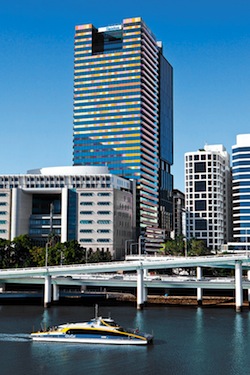The Challenge of Change Part One: Why is it so hard to make change in organisations?
 One of the most interesting things about “managing” change in organisations is the spectacular rate of failure. This has become more and more important as the environment in which we do business has become more and more complex. The need for change has become more constant and the pace of change has become more rapid. They need to understand how to make change successfully within organisations, businesses and enterprises is now more important than ever.
One of the most interesting things about “managing” change in organisations is the spectacular rate of failure. This has become more and more important as the environment in which we do business has become more and more complex. The need for change has become more constant and the pace of change has become more rapid. They need to understand how to make change successfully within organisations, businesses and enterprises is now more important than ever.
The costs of failed “change” initiatives can sometimes be obvious if the enterprise has to close or is taken over. But the costs of change initiatives that are partially successful (or to look at it another way partial failures) can also be high in terms of higher staff turnover, lower productivity, and poor customer service. So where does it all go wrong?
It might be possible to give you a very long list of “reasons” why change management initiatives fail. The core and fundamental reason is a lack of understanding of the nature of a ”business” (or organisation or enterprise). All other “mistakes” flow from this one problem.
There have been some schools of “management” theory that have suggested that the business is a machine and that the “staff” in the business are like components keeping the “well oiled machine” running. If the “system” was organised properly then the components would operate to maximum efficiency and everything would go well. If there was a problem with a component you could just take it out and replace it… plenty more where that came from.
According to this view then making changes to the business is simple… just decided how you want things to run, write the procedures, tell everyone how things are going to be, make the structural changes (e.g., take out or add components where necessary) and turn on the power again. Efficiency was the buzzword and resources were allocated assuming the machine could run efficiently at maximum capacity all the time. Employees were expected to leave any “issues” they had outside and focus solely on playing their assigned part in the machine when they came to work.
Unfortunately the “outcome” of applying this theory to “managing” change has been a high rate of outright “failure” and damaged “machines”.
So why is this so?? Why doesn’t this approach to change work??
Current developments in the research thinking recognises that there is a high level of unpredictable complexity (more like chaos) in any organisation, business or enterprise. Rather than thinking of it as a “machine” it might be more helpful to think of it as a “complex living organism”… more like an ant’s nest, flock of birds or a bee hive than a machine. Each of the “components” is a complex individual that react in an illogical, emotional and unpredictable fashion to almost everything that happens. So managing one employee can be complex enough, but when you consider that you then need to account for the same degree of difficulty for each individual in the organisation, and then the relationship between each individual and all the other individuals they come into contact with (groups) and then the interaction between these groups and other groups, and al of this before you add in customers……you can see why thinks get a bit out of control.
But what has this got to do with change?? Well, you may know that large groups of individuals tend to become “self organising”. This can be seen in formations formed by large flocks of birds or shoals of fish or ant armies. The decisions and actions of each individual affect the decisions and actions of other individuals. Some research is suggesting that any attempt to impose “top down control” over a self organised system will fail. A better approach is to apply some kind of carefully considered influence at the right points to gradually encourage the collective to change its own behaviour.
Join our Positive Productivity Network for access to Part B
[aio_button align=”center” animation=”bounce” color=”orange” size=”medium” icon=”user” text=”Sign Up for FREE Membership” relationship=”dofollow” url=”http://positiveproductivity.com.au/sign-up/”]
All rights reserved. This website or any portion thereof may not be reproduced or used in any manner whatsoever without the express written permission of the publisher except for the use of brief quotations embodied in critical reviews and certain other noncommercial uses permitted by copyright law. For permission requests please contact us at info@ronitaneal.com


 Feel free to send us any questions by clicking the button above.
Feel free to send us any questions by clicking the button above.

